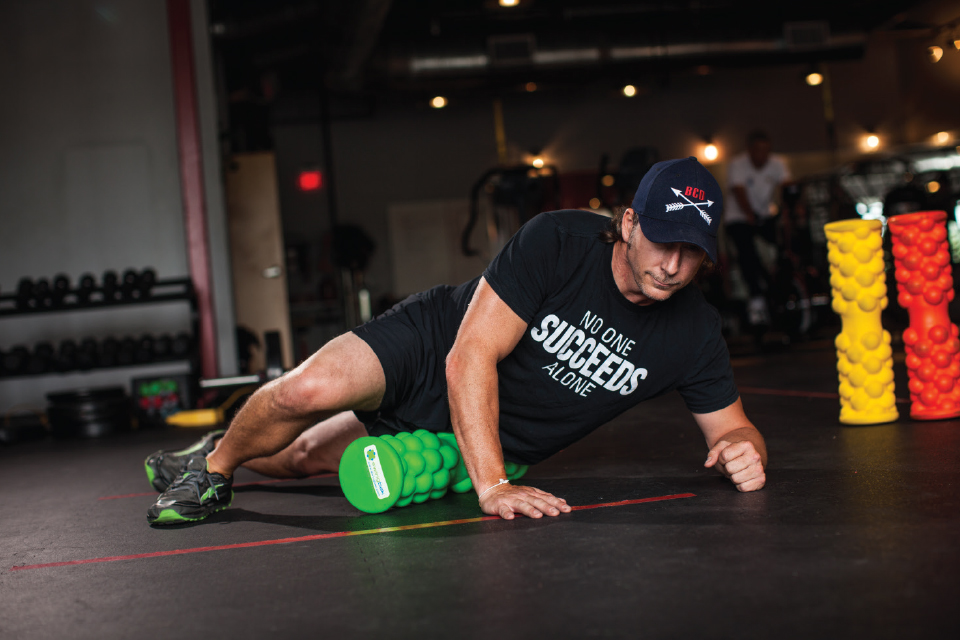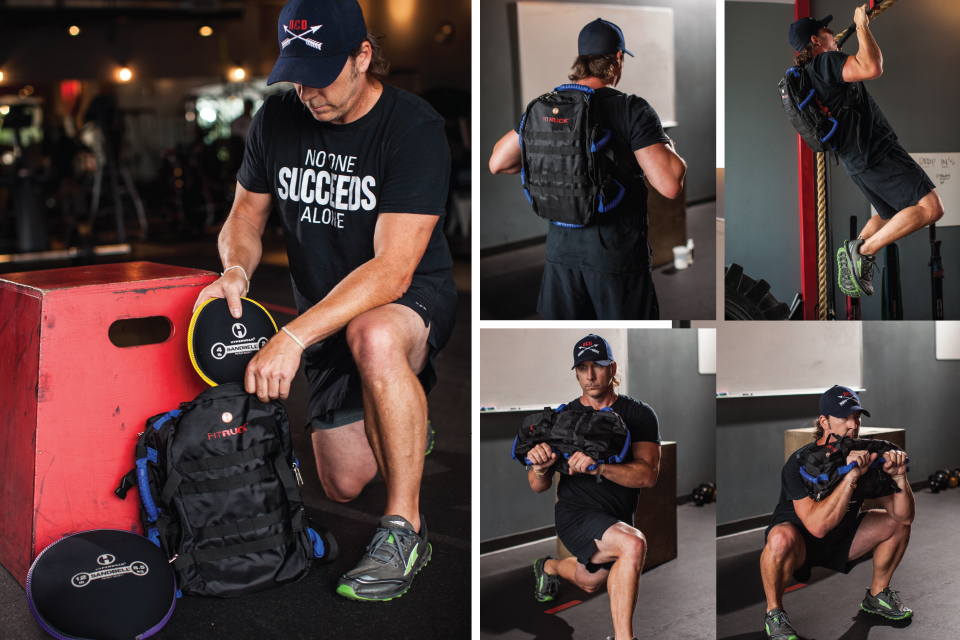Getting a Grip on Great Gear

Hand Armor Liquid Chalk
If barbell movements, kettlebell work or pull-ups are regular staples in your program, this might be your next favorite training aid. Forgive us for stating the obvious, but any legitimate workout in Austin during the summer months not done indoors will make you sweat (a lot). Until now, the solution for slippery, sweaty hands has been a nearby towel and frequent trips into the chalk bucket, set by set, round by round. Enter Hand Armor’s Liquid Chalk.
The HALC product Web page claims that its antibacterial formula kills germs left by others on anything you pick up, that it’s long-lasting, produces no mess, and even prevents blisters. We put an 8-ounce bottle and some single serving packages through the Truth-O-Meter (hard, hot workouts) at multiple gyms.
Similarities
Grip was great. Equal to or better than regular magnesium carbonate gym/climbing chalk. No blisters with either substance.
Both look white on your hands, though when used as directed, the HALC produces a more complete coverage area.
Both products leave chalk residue on whatever implement you’re using in your workout.
Differences
If it does indeed kill germs (we didn’t do germ counts before and after, sorry), it stands apart from regular chalk, which has no claimed antibacterial properties.
Impressively, it lasted through two to three three rounds of deadlifts, overhead presses and pullups. Regular chalk needed re-application after each round.
Drawbacks
It takes longer to apply and use because of the time spent waiting for the liquid medium to evaporate and leave you with perfectly chalked hands. Hand Armor’s 30-second estimate seemed a bit low. It actually took about 45 seconds, but drying could be sped up by a quick trip to stand in front of the gym fan, which is not a bad thing during a workout. If you’re doing as many reps as possible (AMRAP), you’ll be better served by your towel and chalk bucket.
Conclusion
This is a product with promise. It’s available in a variety of sizes and can even be dispensed via a mountable wall dispenser. If a firm grip and no kicked-over chalk buckets to sweep up after appeal to you, HALC is worth a try.
Rating: 4/5

Swingbak Foam Roller
Each equipment catalog that comes through the mail slot each month seems to have two or three colorful new rollers in the self-myofascial release section. Small ones, big ones, bumpy or smooth, cheap or expensive, we’ve seen the lot. This month, we went local, reaching out to Dr. Mike Bhatt, founder of Pinnacle Sports Performance and Rehabilitation, to learn about and demo the Swingbak roller series (see the video in our online version).
Dr. Bhatt is a sports chiropractor who treats professional athletes and weekend warriors from a variety of sports, many of them with demanding, repetitive rotational movements like golf and baseball require. Frustrated with the clunkiness of the old school “two tennis balls in a sock” tool, he came up with the Swingbak, a roller with three distinct surfaces that the user can choose from depending on what area of the body is in need of a roll out.
The most noticeable feature of the Swingbak is its array of golf ball-sized bumps (“pressure nodes”) that make up most of its surface. These reminded us of what our regular roller would feel like if it had 56 lacrosse balls embedded into its surface. The middle section of the roller (the “bone zone”) provides a space for your spine, hip or other bony area to roll comfortably as the surrounding soft tissue is treated by the bumps on either side. The disc-shaped end caps delivered a focused pressure that felt particularly effective on the inside border of our testers’ shoulder blades. We liked the bright colors too.
The standard 22-by-6 inch Swingbak is available in soft, medium or firm densities online from $66.95, and a travel size is in the works. Its versatility and effectiveness make it a standout in the foam roller market and the best one we’ve tested yet.
Rating: 4/5

Hyperwear Fit RUCK
On a visit to Hyperwear headquarters in north Austin to return our last review’s SandRopes demos, I casually asked President Dirk Buikema what he had up his sleeve next. He got a gleam in his eye and motioned for me to follow him to the warehouse. A quick reach into a really big cardboard box yielded a black and blue beta-model Fit RUCK Sandbag Training System.
After a thorough inspection, we quickly put it to work in the gym, the park, and later in the week, at X Games (as a backpack). It did well in both settings.
Created as a sturdy pack that can be loaded with SandBells, SteelBells or SandRopes, it will carry your gear wherever you want to haul it. When it’s go-time, simply stow the shoulder straps into a zipped compartment on the back of the RUCK, load up the desired extra weight, and get to work. It functions like a medium-sized sandbag, with six handles oriented at different angles and positions around the pack providing a variety of grip options. We chose a ground-to-overhead move (and drop) followed by alternating reverse lunges with torso twists. The drop turned out to be a bad idea, eventually breaking one of the shoulder strap bottom buckles. Duct tape provided a quick fix for us, and Buikema assured us that would be improved on production models when we passed along our feedback.
Max capacity is rated at 60 pounds, enough for all but the strongest and fittest of us to lift, toss, catch and run hill repeats with. Outdoor group fitness may indeed be the Fit RUCK’s best application. Think of it this way: aren’t you tired of carrying your yoga mat and dumbbells to Auditorium Shores? To use a dining analogy, we can easily imagine a series of exercises with the pack loaded as the first course, followed by a series of moves using SandBells removed from the inside as course two. The bike ride home with 60 pounds on your back is dessert.
Rating: 4/5






